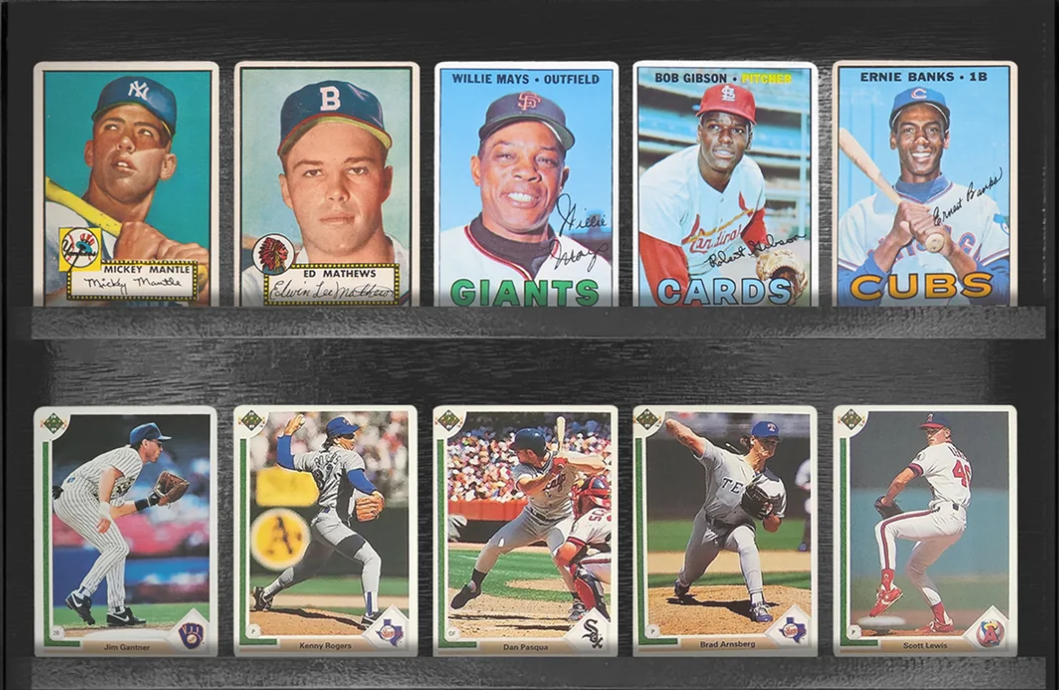Remember the thrill of finding a cool athlete card in a pack? That feeling is more than just a childhood memory now. Sports card collecting has exploded into a giant business, worth billions of dollars! This article will take you on a journey through the history of this hobby, showing how it went from something kids did for fun to a serious way to invest money. We'll explore why cards became so valuable, and how to keep your collection safe!
The Early Days of Humble Beginnings
The story of sports cards actually starts way back in the 1800s! Believe it or not, back then, companies that sold candy (and sometimes cigarettes, not the healthiest choice!) sometimes included pictures of athletes with their products. Kids loved these little athlete pictures, and soon companies started making cards just for collecting – sparking a whole new interest in collecting sports cards. These early cards didn't have much information, but they planted the seed for what was to come. So, what exactly are sports cards? In essence, they are small cards with pictures and information about athletes from various sports.
How Sports Cards Are Made
While this article focuses on the collecting side of things, sports cards themselves are interesting! The card creation process involves choosing a photo of a player, designing the layout (including the athlete's name, team, and statistics), and then printing the cards on special cardstock that's designed to be durable. Some high-end cards even have special inserts or autographs from the athletes themselves, making them even more collectible!
The Rise of the Serious Collector
By the 1970s, sports card collecting wasn't just for kids anymore. Grown-ups jumped in for two reasons: memories and money! The hobby got more popular, and that's when new companies started checking cards to see how good condition they were in. This way, everyone knew exactly how valuable a card was. This process of checking a card's condition is called grading. Grading became super important, and it made collecting cards a more serious business. People who wanted to make money by buying and selling cards, not just fans who loved their favorite players, joined the hobby looking to invest in the trading card industry.
Superstars Rule the 80s & 90s Trading Card World
The 1980s and 90s were like a magic trick for sports card collecting. Superstar athletes like Michael Jordan, Wayne Gretzky, and Joe Montana were superstars everywhere, and trading card companies took notice. They started making special, limited-edition card sets featuring these legends. These special cards, along with more shows and auctions for collectors, made regular cards much more valuable. For the first time ever, cards weren't just cool keepsakes; people saw them as a way to invest their money and potentially make a lot more!
The Digital Revolution and the Rise of Online Marketplaces
The year 2000 brought the internet age, and sports card collecting got swept up in it! New online marketplaces like eBay popped up, making it super easy for collectors around the world to buy, sell, and trade cards with each other. This made the market even bigger, and some cards started selling for crazy amounts of money! Social media like Instagram and Twitter also joined the game, creating a big online community of collectors. This way, collectors could show off their awesome cards, chat about the latest sports card news, and connect with other fans who loved collecting just as much as they did.
Investment Strategies and the Importance of Card Grading
Sports card collecting has grown up! Today, it's more than just finding a cool card in a pack. People who collect cards to make money have to be like strategists. They think about things like how good a young player might become in the future, how many of a certain card were made (think limited editions!), and of course, how good condition the card is in (no bends or scratches!). This process of checking a card's condition is called grading, and it's super important for valuable cards. Companies like PSA and Beckett Grading Services (BGS) are the experts at grading cards, and their scores can make a huge difference in how much a card is worth.
Ensuring Longevity with Sports Card Display Cases
As the value of sports cards continues to rise, collectors are increasingly turning to sports card display cases to safeguard their treasured pieces of card memorabilia. These cases not only protect cards from dust, moisture, and light damage, but also enhance their presentation value. Whether you're a seasoned collector or just starting out, investing in high-quality display cases is essential for preserving your collection and showcasing it with pride. Check out our full collection of Card Display Cases.
Conclusion:
So, are you ready to unbox the next chapter in sports card collecting history? Whether you're a seasoned investor with a keen eye for talent, or a wide-eyed fan chasing your childhood dream, the thrill of the hunt is still alive and well. Start building your collection today, and who knows, that next pack might hold the key to unlocking a future legend -and a valuable piece of sports history for your collection.

